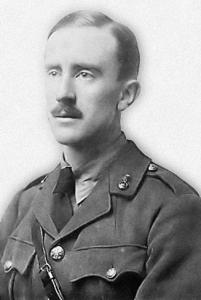The writing style of
J. R. R. Tolkien
J. R. R. Tolkien
1892-1973
English writer and philologist, best known for his high-fantasy works 'The Hobbit' and 'The Lord of the Rings' trilogy.
J. R. R. Tolkien’s writing style is as intricate and richly woven as the worlds he creates. His prose is characterized by a meticulous attention to detail and a profound reverence for language, which is evident in every sentence he crafts. Tolkien, a philologist by profession, had a deep understanding of language roots and structure, which he employed to construct the elaborate languages and names within his works, adding a layer of authenticity and depth to his storytelling.
Tolkien’s narrative technique often involves an interplay of various linguistic styles, including archaic terms and structures, which evoke a sense of antiquity and legend. This is particularly evident in “The Lord of the Rings” and “The Silmarillion,” where he uses a formal, elevated diction reminiscent of epic poetry. This choice not only enriches the narrative but also aligns with the epic scope and high stakes of his stories. His sentences are typically long and descriptive, with lush, vivid descriptions that engage all the senses, inviting readers to fully immerse themselves in the world he has created.
In constructing his narratives, Tolkien favors a slow build-up, allowing for extensive world-building and character development. This methodical pacing can be seen as a double-edged sword; while it serves to deeply draw the reader into the intricate details of Middle-earth, it also demands patience from the reader as the plot gradually unfolds. The use of detailed appendices and footnotes to explain the backstory and lore further exemplifies his thorough approach.
Dialogue in Tolkien’s works often serves multiple functions—revealing character, advancing the plot, and enriching the world lore. He skillfully varies the speech patterns of his characters according to their origins and status, adding layers of realism and diversity to his character portrayals.
Tolkien’s style, with its blend of ancient lore and rich linguistic tapestry, invites readers into a deeply immersive experience, reflecting his own deep connections to the myths and languages that inspired him. His writing not only tells a story but also evokes the feeling of reading a long-lost historical document, a testament to a past that, while fictional, feels profoundly real and tangible.
